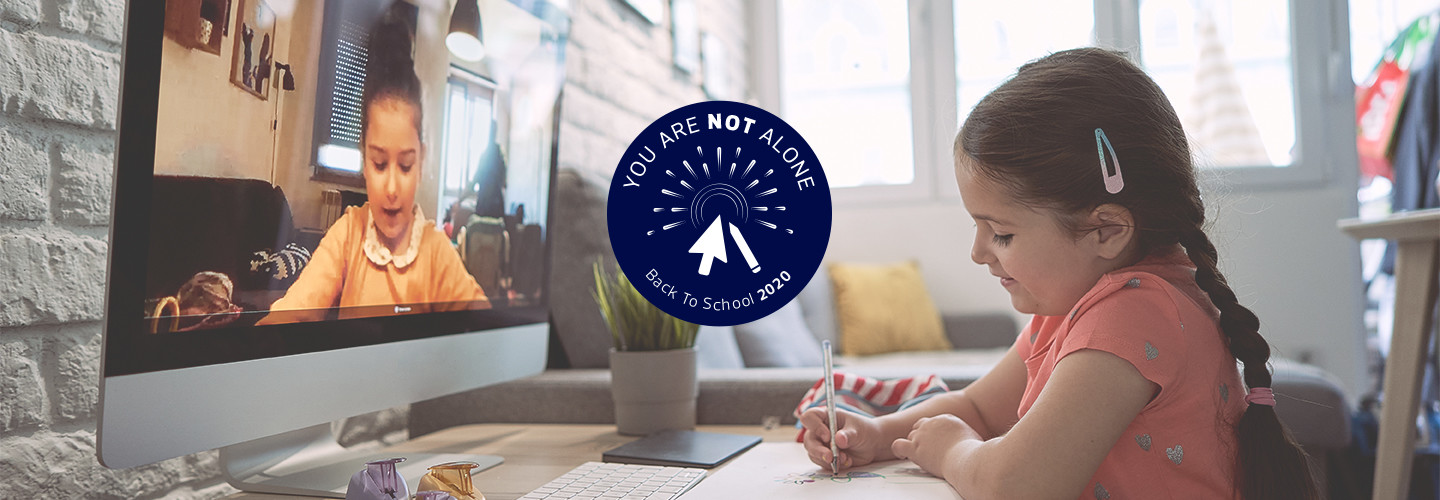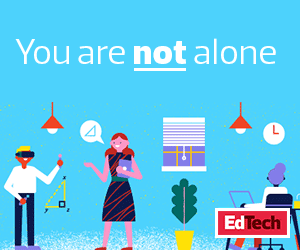CJ Reynolds, a ninth grade teacher and HMH ambassador, said in a press release about the report that educators are not only responsible for teaching — they must also help “nurture students’ minds, bodies and souls.” “To do our work properly, we must empower educators with the tools and training necessary to ensure every student is cared for and supported,” he said.
Fortunately, a range of resources are available to educators to support this need.
Re-Create Face-to-Face Interactions with Videoconferencing
With the shift to remote learning, students lost the informal interactions they had at school — from catching up in the hallways before class to eating lunch together in the cafeteria.
“Part of what happens often in the remote learning environment, it really strips out everything but the academics,” says Brian Cooper, director of educational innovation and online learning at Duke University’s Talent Identification Program, in a recent webinar.
But those interactions are crucial to developing students’ interpersonal skills. “Students are learning in those environments,” Cooper says. “They’re making friendships. They’re learning how to interact with each other.”
Videoconferencing tools can help educators rekindle those connections. Outside of the conventional classroom instruction mode, platforms like Google Meet and Microsoft Teams can help teachers replicate face-to-face interactions.
“For example, you can have a group of students have lunch together to practice their social skills,” Smith says. “You can reproduce that in the teleconference, with peers modeling behaviors and practicing their skills.”
Teachers can also use these tools to stay connected with students and their families. Heather Baker-Sullivan, a seventh-grade teacher at Rafael Hernandez Dual Language Magnet School in New York, says she started using Meet early in the remote period to get together with her students.
“I blocked out three hours every weekday in 15-minute time slots. Kids could reserve a time by making an appointment,” she says. “It was great for one-on-one time with them. I could ask them privately how they were doing and if their family had enough to eat.”
Sullivan says those check-ins also helped her spot mental health red flags. “In a few cases, I could pass along to the dean or a psychologist what I thought might be a case of depression,” she says.
DISCOVER: Learn how to encourage good student behavior while videoconferencing.
Online Tools That Bolster Social and Emotional Learning Skills
Teachers and administrators can also leverage a wide range of online tools to address various aspects of SEL.
Students learn by doing. With game-based learning tools like Classcraft, for example, they can be the heroes of their own adventures while building critical skills such as self-awareness, cooperation and responsible decision-making. This platform, as well as many like it, also works seamlessly with popular learning management systems such as Google Classroom, Microsoft Office 365 and Canvas.
It’s about “finding ways for kids to experience greater control through gaming and creating community through multiplayer games,” says Dr. Rebecca Mannis, learning specialist and founder of Ivy Prep Learning Center.
Meanwhile, at Glades Middle School in Broward County, Fla., eighth-grade teacher Jennifer Moser uses the free Character Playbook tool to teach peer counseling. “It has graphic novels and interactive games, with real-life skills that they can connect and relate to, all connected to social and emotional learning,” she says. “It addresses bullying and behavior issues and making appropriate choices.”
Esports, which is already on the rise among many school districts, offers another avenue to explore and enhance SEL skills. Experts point to leadership, collaboration and teamwork as some of the key benefits of an esports program.










